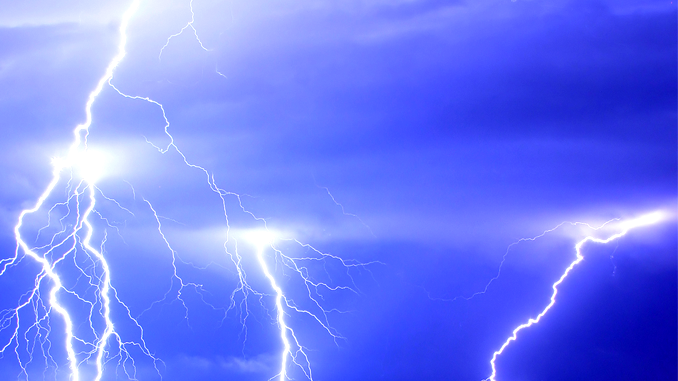
Can we get electricity out of gravity, or is that a feat akin to squeezing blood from a stone? The concept of getting electricity from an ordinary battery is widely accepted, even taken for granted, but from gravity? Really? Yes, we can! In fact, it’s not even a new idea. Hydroelectric dams have been using gravity for well over a century to make electricity. It’s not the water that produces the electricity, it’s the energy of gravitational pull causing the water to flow through the hydroelectric dam and turn the turbines that generates electric power.
The idea of using gravity to power devices is even older than mankind’s ability to generate electricity. Weight-driven mechanical clocks were invented as early as the fourteenth century. One of the oldest (if not the oldest) clocks in the world that still works is found at Salisbury Cathedral in the UK, which was first installed in the year 1386. Another example that uses weights in a similar manner to turn the gear mechanism is the classic grandfather clock. Such like clocks frequently also have a pendulum for more accurate time keeping, but it’s the gravitational pull on the weights that makes it run. Here’s a quick video tour demonstrating the ancient Salisbury Cathedral clock, cued to start at 1:20 – you can stop watching at 3:00 (total length, start to finish is 7:54):
What good is this old technology to us now? Well, our global need for electricity keeps growing. Somewhere around one billion people (maybe more, maybe less, depending on whose estimate we look at) in under-developed regions still don’t have access to commercial power, and the energy needs of the rest who do live on the grid continues to grow with no end in sight. There are different ways to apply gravity battery technology to our current needs, from big to small.
Wind turbines and solar arrays have gained a great deal of acceptance, despite their various shortcomings, because they pollute the air less than fossil fuels. Principal among those drawbacks are that neither can produce energy all the time or on demand (unless the weather is fully cooperating).
Conversely, if the wind or solar project can produce more kilowatts when it’s windy or sunny than can be used at that time by customers, then the excess electricity must either be stored or it’s lost. To be more competitive with fossil fuel plants, wind and solar would benefit from being able to economically store the excess energy they can produce. Clearly, this is a case of energy feast or famine that cries out for a storage solution to preserve extra energy for later use.
Conventional batteries, even for small solar or wind harvesting setups are expensive and wear out over time. For big projects, the cost is prohibitive.
This is where gravity batteries prove valuable. The device uses a heavy weight that is pulled downward by gravity to rotate a set of gears. As the gears spin, they turn a generator that produces electricity. When the weight reaches the bottom, i.e., the full extent of the cable, it can go no further; the gears stop, the generator stops making electricity, the gravity battery is fully drained of energy, and effectively it is now a dead battery.
But it can be recharged! When a wind or solar farm is making electricity above and beyond consumer demand, that excess energy can be directed into the gravity battery, which pulls the heavy weight back to the top. (This works because a generator is also an electric motor… when it turns in one direction it generates electricity, and in the opposite direction it uses electricity to turn a shaft and do work). With the weight back at the top, the gravity battery is fully recharged and is storing the excess energy produced by wind and solar. The next video demonstrates a small gravity battery that looks like it was built by engineering or physics students. The system is generating electricity as the weight falls, powering the turntable and speakers so we can enjoy the music (2:21):
For a gravity battery to be useful in conjunction with wind and solar farms, we need a large system. A company called Energy Vault, based in Switzerland, has designed a large scale gravity battery, as portrayed in this video (2:11):
Instead of a tower, an existing vertical mineshaft (typically used for ventilation) or an old well would be possible candidates for a mid-sized gravity battery setting, without the costs of drilling or digging.
At the smallest end of the range, a personal gravity battery potentially has a huge market in the under-developed off-grid world, especially in Africa, Asia, and South America. Such a small device could also be in demand by campers, preppers, or anyone who wants a lantern at home or work when the commercial power goes out, without having to worry about convential batteries dying. A company called Deciwatt has developed a product they call GravityLight to meet all of those needs. Let’s look at the rest of that video from above, this time cued up where we left off at 3:00 (ends at 7:54):
We need a way to store excess electricity, and we need it to come from a system that doesn’t pollute, that is, if we value clean air to breathe. A gravity battery fits that criteria, and it has the potential to last indefinitely with proper maintenance because worn-out parts can be replaced, unlike with conventional batteries.
Question of the night: What’s the one thing that requires electricity that you could not live without?
